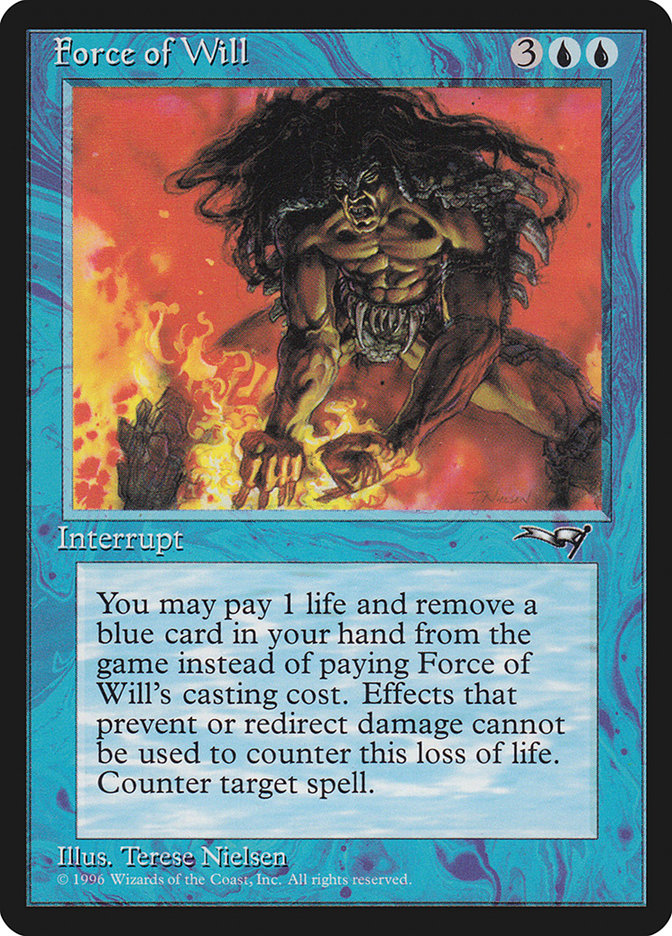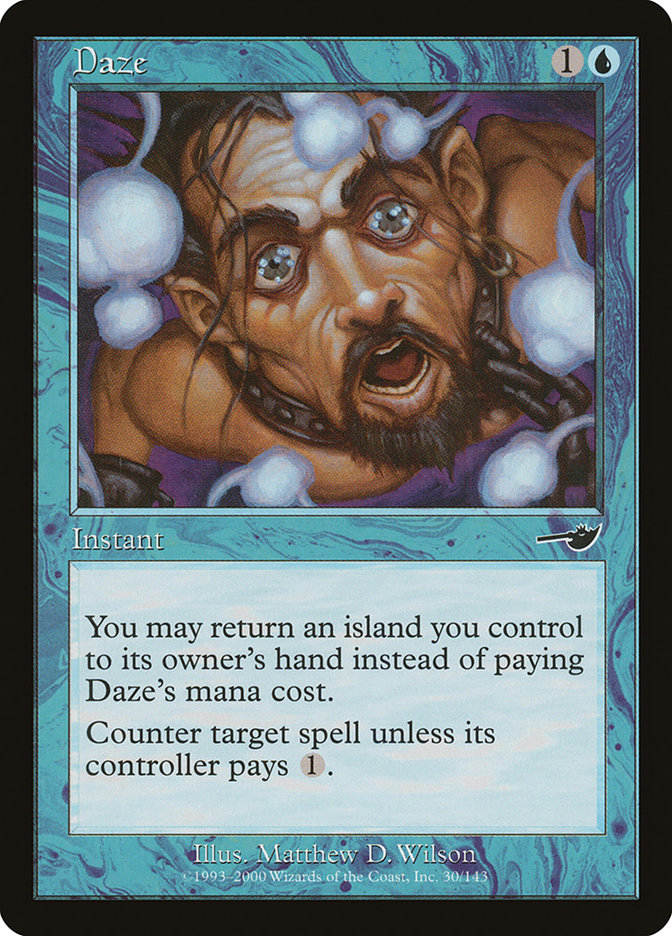
I spent last weekend playing the WMCQ and a Legacy “Duel for Duals” side event at Eternal Weekend in Philadelphia. While I would have liked to head down to Charlotte to gain some much-needed Open Series Points, the stress of flying every weekend was beginning to take its toll and these tournaments would provide some much-needed preparation for the Season Three Invitational this weekend in New Jersey.
Plus, Reading Terminal Market is heaven on Earth. So it was off to the land of roast pork sandwiches, potato pancakes, and basically anything else you could ever want to eat.
The Old Standby
Saturday was the WMCQ, and that meant Standard. Despite looking at a variety of other options, I ultimately settled on G/R Devotion because of my experience level from playing it for the last month or so. As you can see below, it was a fairly typical list:
Creatures (30)
- 4 Elvish Mystic
- 3 Polukranos, World Eater
- 4 Sylvan Caryatid
- 4 Courser of Kruphix
- 3 Genesis Hydra
- 4 Rattleclaw Mystic
- 4 Whisperwood Elemental
- 4 Dragonlord Atarka
Planeswalkers (4)
Lands (24)
Spells (2)

There is not much to analyze here except that Rending Volley made its way to the sideboard to combat the rise of Jeskai and that Arbor Colossus is the perfect card against Stormbreath Dragon. I trimmed on the Naturalize effects because I expected very little in the way of U/R Thopters, but I was too scared to cut down on Nylea’s Disciples in case I ran into Mono-Red Aggro.
I felt pretty good about G/R Devotion given that Abzan Aggro has historically been a good matchup and the addition of Hangarback Walker should do little to change that. Unfortunately, it seems as though the sideboards of these decks have become more prepared for the G/R Devotion matchup than they were previously, with the rise of Tragic Arrogance and the return of Herald of Torment.
I ended up being knocked out of the tournament by consecutive losses to G/W Megamorph and Abzan Aggro in rounds four and five, a precipitous fall after my strong 3-0 start. While both these matchups look good on paper, and possibly are slightly favorable overall, both decks are so streamlined that it is difficult to keep up with G/R Devotion if you stumble on mana at all.
Also, both decks have the capability to either go over the top of your ground creatures (say, with a large Den Protector) or go toe-to-toe with them with planeswalkers and their own creatures. That means you are more reliant on Dragonlord Atarka than ever before, and with their healthy removal suite, both those decks can consistently take an Atarka or two off the board.
G/R Devotion has not changed much over the last few months, and it seems that the metagame has finally evolved to a point where the deck has no great matchups… which is definitely an issue. Close games are more likely to be decided by a single good draw or one person hitting a pocket of lands, so being able to frequently overpower your opponent and take an easy win is important over long tournaments, otherwise you will simply fall victim to variance too often.
Interestingly, the WMCQ saw a very similar Top Eight to Grand Prix London, with plenty of Dromoka’s Commands and Siege Rhinos to go around. Perhaps the metagame is finally entering some semblance of a steady state, or many people were simply over-prepared for the aggressive decks from the Pro Tour and have yet to flesh out the best strategies for fighting G/W Megamorph and Abzan Aggro.
Either way, I’m expecting more of the same this weekend in New Jersey, and as of now I would say the most likely scenario is that I am joining the dark side. G/W Megamorph gets to play Elvish Mystic while Abzan Aggro handles Hangarback Walker more easily with Anafenza, the Foremost and Abzan Charm.
Perhaps Worlds will provide a late shake-up to Standard, but it looks to me like we have found a deck whose combination of raw power and efficiency will make it incredibly difficult to dethrone.
The Shiny New Toy
Without the ability to play Vintage Champs, I entered a Legacy side event with a full playset of Revised duals and fetches as prizes, which had around 130 players so it would prove to be a solid tune-up to my Legacy plans before the Invitational. Having focused on Delver strategies since I put down Storm, I decided to try the new Grixis variant that has become very popular lately.
Borrowing heavily from Dylan Donegan list from the Washington D.C. Open, I registered his exact maindeck with an updated sideboard:
Creatures (14)
Lands (18)
Spells (28)

I added Electrickery as an answer to opposing Young Pyromancers that has utility in other matchups, and while I did not come up for me in the tournament I think it is a great addition to the deck. Submerge was meant as another answer to Tarmogoyfs, but with how few of those I saw around it may not be necessary. The biggest cut I made from Donegan’s list was to remove Surgical Extraction, which is a card I am heavily biased against and likely should have left in because of the increased popularity of Lands.
I ended up losing to Reanimator in some games where I did everything I could but he drew to his outs and then fell to two Delver mirrors, one Grixis and one Sultai.
Initially I was unimpressed by the deck in part due to the awkward play patterns Young Pyromancer forced you into. A key aspect to building good tempo decks is that your cards are flexible enough to allow you to sequence them as the game dictates. Tarmogoyf can come down either early or late and provide immediate impact, but Young Pyromancer is much better when you land it early – before you’ve chained your various cantrips – and get an extra Elemental when you use your counterspells.
This forces you into spots where you have to decide between maximizing the utility of Young Pyromancer or maximizing the utility of your other spells, which is not a good position for tempo decks to be in. Oddly enough, this means that Delver of Secrets and Young Pyromancer, while both being cheap threats that encourage you to play with lots of instants and sorceries, do not support the same strategies. Young Pyromancer is much better in a control shell (take GerryT’s list from the Charlotte Premiere IQ as an example) where you naturally play a long game and can get value from it even when played later.
It is possible that the Grixis Control deck is simply a better shell than Grixis Delver, since both are leveraging a bevy of blue cantrips with Pyromancer and Dig Through Time. However, the control deck is much more of a true Dig Through Time deck whereas the Delver deck is just using Dig as a tool because it is so powerful. However, I worry that the control deck is too threat-light to provide an appropriate clock against combo decks, especially Omni-Tell that has its own Dig Through Times to power through disruption.
Not to dismiss Grixis Delver too early, I looked back on my losses and found that I likely misunderstood how the Delver mirrors play out with this new list.
My typical approach to the Delver mirror has been to try to go underneath my opponent by sideboarding out my more expensive spells and keeping all my cheap spells. This means keeping Force of Will on the play and Daze on the draw, which I know many players do not like to do because they are poor topdecks later in the game.
However, I have found that with the low land counts and number of Wastelands involved, Daze stays relevant much longer than it normally does and lets you protect key threats or removal spells. Force of Will also does this, and the tempo gained from these cards is often enough to swing a game. The player who falls behind early in the tempo mirror will find it difficult to land their own threat and with proper sequencing from their opponent is always kept in the position of answering threats and losing ground.
Force of Will is also important when there are threats that the Delver decks find very difficult to answer, notably Tarmogoyf and Gurmag Angler. Giving up a card to either deny your opponent one of these cards or protect your own is a trade I am happy to make time and time again.
But the games I lost played out a little differently, with players trading resources more easily and playing a longer game. The shift from Tarmogoyf to Young Pyromancer in the Grixis mirror especially means that more of the threats are answered by a Bolt (of either the Lightning or Forked variety) and unlike Tarmogoyf, Gurmag Angler is only a two-of due to its restrictive cost.
The addition of Dig Through Time further pushes the matchup to this end, giving both players a key card-advantage spell to pull ahead with. Unfortunately, I was bringing out my Digs in order to make my deck leaner… so when we entered a topdeck war, I was at a significant disadvantage.
In this way the Grixis Delver deck plays out like a hybrid of the more aggressive Delver variants and the blue midrange decks (think Shardless Sultai). It is aggressive, but it can easily play an attrition game when appropriate. If both plans prove to be powerful then the deck should be excellent, but it is possible that the plans are too diluted and the deck ends up being worse than the options that are more committed in one direction or another.
 Right now I am intrigued by Gerry’s Grixis Control list as an alternative that is better focused on being a Young Pyromancer/Dig Through Time deck since Dig is among the most powerful cards in the format right now. The best-performing decks in Legacy Champs (Top 32 lists can be found here) were Grixis Delver, Omni-Tell, Miracles, and Lands. Together they took nineteen of those thirty-two spots, a full 60% of the field. All three blue decks utilize Dig Through Time while Lands is the most powerful non-blue deck in the format.
Right now I am intrigued by Gerry’s Grixis Control list as an alternative that is better focused on being a Young Pyromancer/Dig Through Time deck since Dig is among the most powerful cards in the format right now. The best-performing decks in Legacy Champs (Top 32 lists can be found here) were Grixis Delver, Omni-Tell, Miracles, and Lands. Together they took nineteen of those thirty-two spots, a full 60% of the field. All three blue decks utilize Dig Through Time while Lands is the most powerful non-blue deck in the format.
But all of those blue decks are existing archetypes that have incorporated Dig Through Time rather than new decks built specifically around the powerful Delve spell. What attracts me most to Grixis Control is that it seems like it is such a deck, and if Dig Through Time is as powerful as the results indicate then building around it should come with a handsome reward.
So that is where I am right now – essentially leaning toward mono-Dark Side decks. Hopefully the picture becomes clearer as I work through my thoughts this week and try some decks out. I could really use a good finish at the Season Three Invitational to regain some of the cushion on the Open Series Leaderboard that I’ve lost over the last month of playing non-SCG events. The Open Series is getting more and more competitive each year, so you may see me step up my game in the fourth quarter and travel a lot.
The Players’ Championship is just too sweet of a prize!



